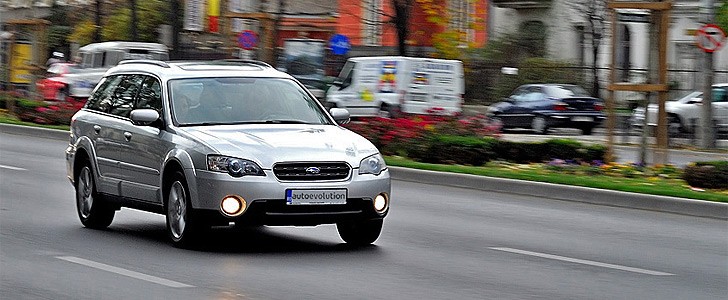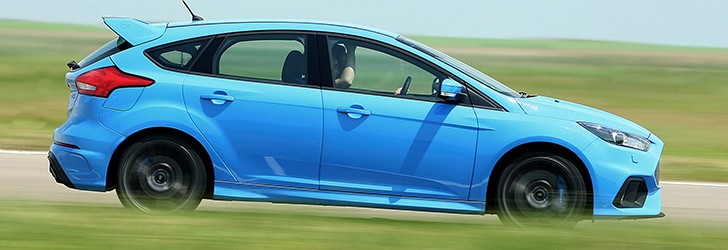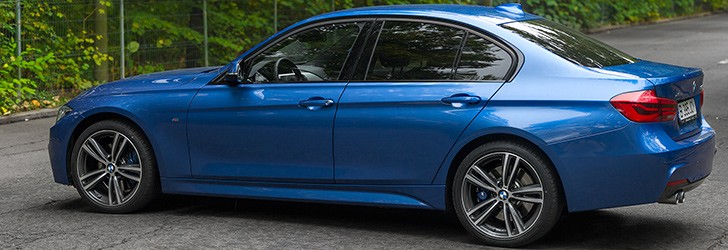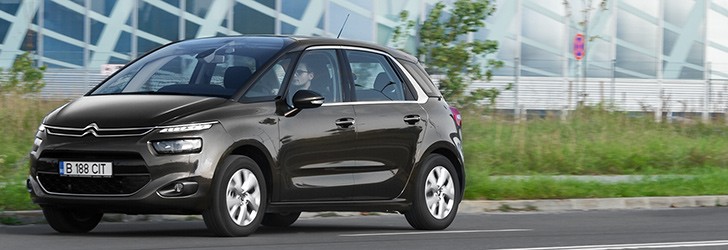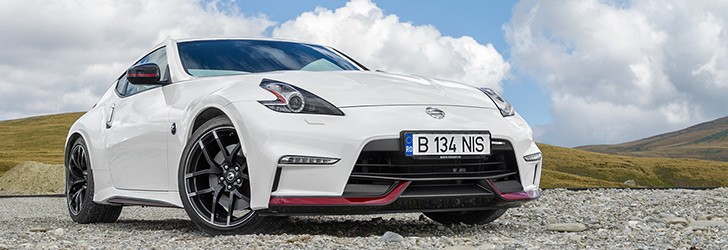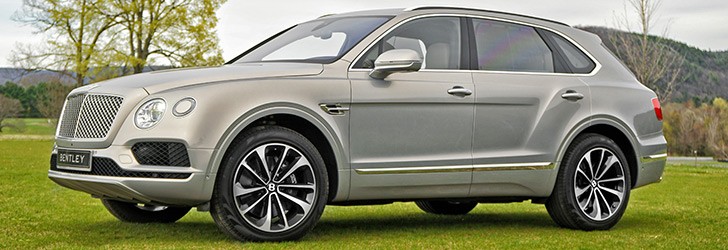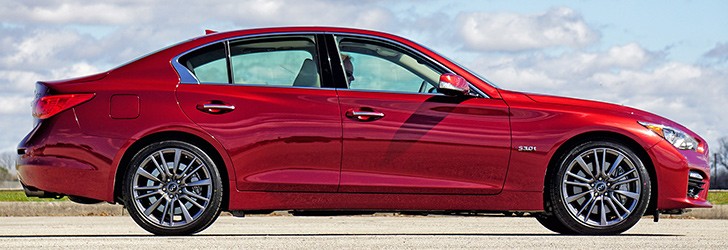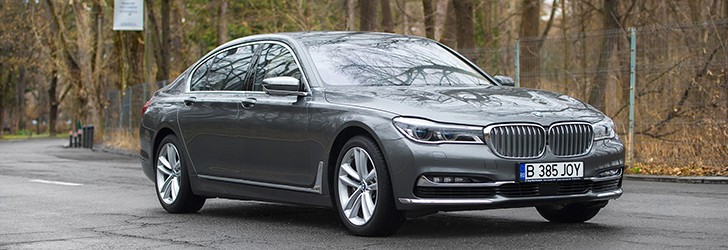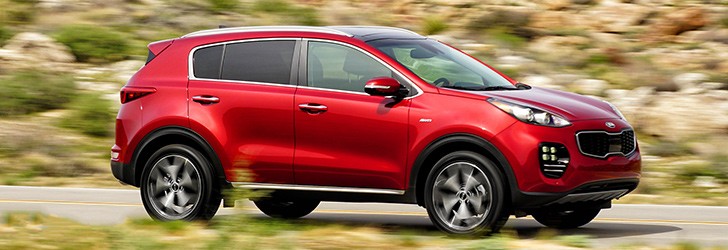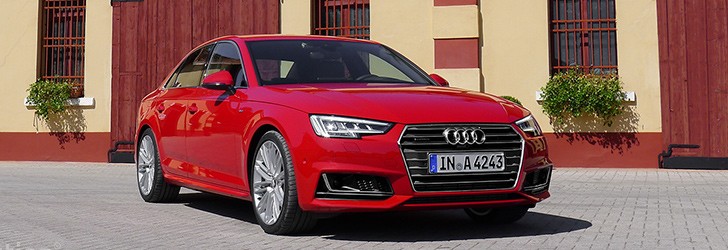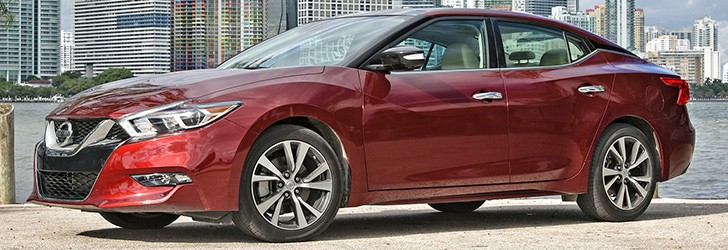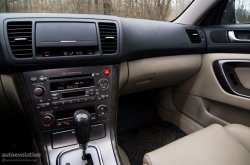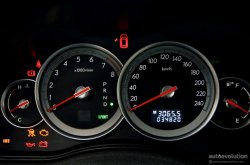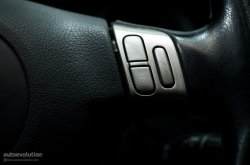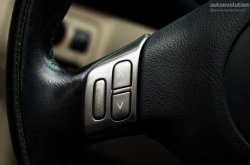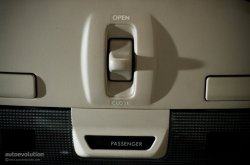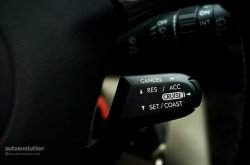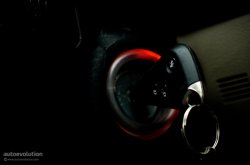SUBARU Outback Review
OUR TEST CAR: Subaru Outback 3.0 R
By reinventing the crossover category in 1995, Subaru hit the jackpot with the Legacy-derived Outback model. All-wheel-drive and SUV-like road clearance on a medium-sized wagon with decent creature comforts couldn't have been more of an appropriate choice for a family in the search for an all-rounder. It was introduced in a somewhat humorous manner with the help of Australian actor Paul Hogan (known from the "Crocodile Dundee" movies and his famous "slip another shrimp on the barbie!" phrase), who was the car's "spokesperson" in its very first commercial.
As with almost every other Subaru, the Outback's main feature resides in its intelligent use of "Symetrical All Wheel Drive", which in the minds of many is right up there with Audi's "quattro" system. We shouldn't of course forget the horizontally opposed cylinders for its engines, which give a good compromise to the height of the car's center of gravity. The car we tested is part of the 2003-2006 (in 2006 it received a facelift) generation for the Outback, and, despite its age it had a rather decent (read: small) number of kilometers on it.
The 3.0 R spec engine was the top engine in the line-up at the time, and apart from a navigation system the car was equipped with a fully loaded trim. This made the vehicle to qualify both as a practical (jacked up) wagon as being somehow luxurious. Being the top-engine, Subaru outfitted the Outback 3.0 R only with the five-speed automatic transmission, leaving no choice for the WRX Sti drivers who desire a car for the holidays (read: no manual transmission available for this spec).
At first glance, the Outback looks like a family wagon on stilts. On closer inspection though, considering this was a 3.0 R model, you can observe the 17 inch alloy wheels and the two "power domes" on the hood, which give a hint of the car's potential under a "heavy right foot". The xenon-equipped headlights kind of remind us of an angrier-looking Volkswagen Passat, but since the Japanese model was launched earlier we cannot put the blame on them for copying anything. Also, they weren't standard and not even optional, which is a little bit strange. Since the 3.0 R comes with a natural-aspirated flat-six engine, there's no need for a hood-scoop to provide fresh air for an intercooler a la Subaru's other turbocharged models.
A classy but sporty touch are the frameless door windows both at the front and at the rear, which give the impression of stepping in/out of a coupe or a convertible. The main differences from the regular Legacy Wagon (apart from the obvious higher ground clearance) consist of a more bulky-looking front bumper which integrates two huge fog-lights, wider wheel arch plastic covers and some plastic "rugged" pieces all around the car, enforcing the impression of "go-anywhere" ability.
The car is pretty long in all directions, but subtle sporty or rugged-looking touches help hide some of its overall size. The rear portion isn't hiding the fact it's a jacked-up station wagon one bit on the other hand, considering the humongous windowed areas on just about every side of the car. The lateral proportions are almost identical to on an older generation Land Rover Discovery, which also resembled a raised station wagon. A nice design touch (albeit very far from being original) are the LED signals integrated in the outside mirrors, which are also adding points to the already "in your face" overall look of the car.
Considering our test car was almost fully equipped except for a navigation system, the array of options on the 3.0 R's trim level isn't exactly hi-tech. Of course, most of the options which lack on this version are to be found on the facelift-ed Outback from 2006 onwards. The center console is pretty ergonomic and functional, albeit simple. Even though it is free of button-clutter, the buttons that are present are easy to reach, and unlike on some of its European competitors, all of them are functional.The overall atmosphere in the cockpit is very relaxed, considering Subaru's somewhat sporty nature.
The inside is enormous, for one thing. Second, it lacks that certain Japanese feel and goes for a little European flavor. The brown-ish woodgrain trim on the dashboard didn't manage to resist the test of time very well though, but it still ads a dose of elegance to the interior, whose design is structured between luxurious and hi tech. The oldschool touch found itself present everytime we noticed the entry for the deck cassette somewhere under the entry for the CD changer. We know that normal persons/drivers of the 21st century don't utilize cassette players anymore but we can't subtract any points for an option that IS present, instead of missing, even though it's most likely redundant.
The quality of the artificial leather trim on the seats, the MOMO steering wheel and around the handbrake lever wasn't also top notch but it wasn't falling apart either, considering we're talking about a three year old car here. The most pleasant surprise about the interior was the gigantic glass sunroof, which is split in two portions. This feature alone (well, together with the fuel consumption in the city actually) persuaded us to turn off the (automatic) air conditioning unit and enjoy the fresh air coming from outside the car.
The two-panel design has a much bigger visor/wind blocker that's also made out of glass, therefore giving plenty of light to the already well lit interior. During the city drive we almost felt like being in a convertible. OK, not really, but it does feel like a glass house in there. The main trouble with the interior, apart from being a little outdated, was the lack of a telescoping feature on the steering wheel, despite the fully electric-controlled seats. The huge glass sunroof and the way the red dash dials make a full turn everytime you start the engine received bonus points though. As a brief conclusion, the Outback is a nice place to sit in. The rear seat is 60/40 foldable, thus creating space in the trunk for enough pallets to build a (very) small cottage house. With all the seats in place, the cargo volume is 460 liters (16.2 cuFT), increasing to 1650 liters (58.3 cuFT) after the rear seats are folded.
There's almost always a catch at having a large interior volume. In our case, that catch is the larger-than-life exterior, which makes city-parking somewhat of a nightmare. We still don't quite get what was the reasoning behind Subaru's decision of not adding parking sensors (they weren't even on the options list) to the Outback. The addition of an aftermarket aforementioned feature can resolve part of the problem, but the lack of parking space in some cities is still an issue for big cars.
Sadly, exterior size isn't our main grief. We didn't expect the Subaru Outback 3.0 R to sip fuel like a smart fortwo CDI in the city, but its mileage in “stop and go” traffic can drive you utterly insane. You wouldn't believe it just by looking at the car's specs, but the fuel consumption can reach 25-30 liters per 100km (7-8 mpg) in practically no time.
OK, so its rather weighty, the transmission has a nasty way of changing through the gears, it has a full-time all wheel drive system and the three-liter six-cylinder engine was born for something that requires power more than torque (read: NOT a family station wagon). Even so, the in-city fuel consumption is in “SUVs with V8s territory”, even though the Subaru looks nothing like its behemoth cousins.
The rather small fuel tank (only 64 liters) doesn't help you get farther either. It's like having the stomach of a small child but the hunger of a construction worker coming home at night. OK, so we have a somewhat small parking grief and a ludicrous in-city mileage.
On the good side we can acknowledge the great all-round visibility thanks to the humongous windows and the elevated driving position. Also, even though it has its fair share of contribution to the excessive fuel consumption, the five-speed automatic transmission is more than helpful in stop-and-go city traffic.
From what we've observed during our test-drive (and not only) the Outback isn't the do-it-all vehicle you're kind of expecting from a crossover, since it's almost completely unsuitable for a crowded city because of the excessive fuel consumption.
Subaru Outback's biggest potential can be discovered in the wilderness. OK, not really, but outside any city is just fine. Apart from the horrific fuel economy, this is one of the few cars which you can call “perfect vacation vehicle”, no matter where you are going. For one thing, there's plenty of space inside for a regular 2+2 family and all their stuff to be hauled. Second, Subaru's “Symetrical All Wheel Drive” can get you out of all kinds of driving situations, be it on or off the road.
Mainly because of the rather slow-thinking automatic transmission, the 8.5 seconds required to go from naught to 100 km/h (62 mph) are a pretty long time considering we're talking about an AWD car with 245 hp. Also, to achieve those kinds of times you have to put the transmission in Sport mode.
Highway driving is very relaxed and the massive ride height doesn't prove to be burdensome on the twisties either, making the Outback a very decent compromise between car-like handling and SUV capabilities. The long front and rear overhangs aren't helping its otherwise great offroading ability but the car can go through some pretty hardcore terrain, thanks to its 20 centimeter ride height and all wheel drive.
The lifted suspension is a bit wobbly and non-Subaru-like, especially at high speeds, but the car remains a good touring performer. The wind noise on the other hand can be pretty harsh on the ears during highway driving, which can make a longer trip a bit uncomfortable unless you have a nice chat partner(s) with you or brought a lot of music CDs.
There are two reasons for this. First, the Outback's overall shape is that of a lifted wagon, which is an inherent enemy of aerodynamic forces acting on the car. Second, one of the “cool reasons” for buying the car not only helps looks but it's also a turn-off because of the wind noise: frameless door windows.
On the whole, the car's main feature are to be found outdoors, whether it's driving to a ski resort or hitting the beach with your surfing buddies. As out-of-the-ordinary it might look (and behave) in the city streets, we can unanimously say that the Subaru Outback was born to perform outside populated areas.
As with almost every other Subaru, the Outback's main feature resides in its intelligent use of "Symetrical All Wheel Drive", which in the minds of many is right up there with Audi's "quattro" system. We shouldn't of course forget the horizontally opposed cylinders for its engines, which give a good compromise to the height of the car's center of gravity. The car we tested is part of the 2003-2006 (in 2006 it received a facelift) generation for the Outback, and, despite its age it had a rather decent (read: small) number of kilometers on it.
The 3.0 R spec engine was the top engine in the line-up at the time, and apart from a navigation system the car was equipped with a fully loaded trim. This made the vehicle to qualify both as a practical (jacked up) wagon as being somehow luxurious. Being the top-engine, Subaru outfitted the Outback 3.0 R only with the five-speed automatic transmission, leaving no choice for the WRX Sti drivers who desire a car for the holidays (read: no manual transmission available for this spec).
At first glance, the Outback looks like a family wagon on stilts. On closer inspection though, considering this was a 3.0 R model, you can observe the 17 inch alloy wheels and the two "power domes" on the hood, which give a hint of the car's potential under a "heavy right foot". The xenon-equipped headlights kind of remind us of an angrier-looking Volkswagen Passat, but since the Japanese model was launched earlier we cannot put the blame on them for copying anything. Also, they weren't standard and not even optional, which is a little bit strange. Since the 3.0 R comes with a natural-aspirated flat-six engine, there's no need for a hood-scoop to provide fresh air for an intercooler a la Subaru's other turbocharged models.
A classy but sporty touch are the frameless door windows both at the front and at the rear, which give the impression of stepping in/out of a coupe or a convertible. The main differences from the regular Legacy Wagon (apart from the obvious higher ground clearance) consist of a more bulky-looking front bumper which integrates two huge fog-lights, wider wheel arch plastic covers and some plastic "rugged" pieces all around the car, enforcing the impression of "go-anywhere" ability.
The car is pretty long in all directions, but subtle sporty or rugged-looking touches help hide some of its overall size. The rear portion isn't hiding the fact it's a jacked-up station wagon one bit on the other hand, considering the humongous windowed areas on just about every side of the car. The lateral proportions are almost identical to on an older generation Land Rover Discovery, which also resembled a raised station wagon. A nice design touch (albeit very far from being original) are the LED signals integrated in the outside mirrors, which are also adding points to the already "in your face" overall look of the car.
Considering our test car was almost fully equipped except for a navigation system, the array of options on the 3.0 R's trim level isn't exactly hi-tech. Of course, most of the options which lack on this version are to be found on the facelift-ed Outback from 2006 onwards. The center console is pretty ergonomic and functional, albeit simple. Even though it is free of button-clutter, the buttons that are present are easy to reach, and unlike on some of its European competitors, all of them are functional.The overall atmosphere in the cockpit is very relaxed, considering Subaru's somewhat sporty nature.
The inside is enormous, for one thing. Second, it lacks that certain Japanese feel and goes for a little European flavor. The brown-ish woodgrain trim on the dashboard didn't manage to resist the test of time very well though, but it still ads a dose of elegance to the interior, whose design is structured between luxurious and hi tech. The oldschool touch found itself present everytime we noticed the entry for the deck cassette somewhere under the entry for the CD changer. We know that normal persons/drivers of the 21st century don't utilize cassette players anymore but we can't subtract any points for an option that IS present, instead of missing, even though it's most likely redundant.
The quality of the artificial leather trim on the seats, the MOMO steering wheel and around the handbrake lever wasn't also top notch but it wasn't falling apart either, considering we're talking about a three year old car here. The most pleasant surprise about the interior was the gigantic glass sunroof, which is split in two portions. This feature alone (well, together with the fuel consumption in the city actually) persuaded us to turn off the (automatic) air conditioning unit and enjoy the fresh air coming from outside the car.
The two-panel design has a much bigger visor/wind blocker that's also made out of glass, therefore giving plenty of light to the already well lit interior. During the city drive we almost felt like being in a convertible. OK, not really, but it does feel like a glass house in there. The main trouble with the interior, apart from being a little outdated, was the lack of a telescoping feature on the steering wheel, despite the fully electric-controlled seats. The huge glass sunroof and the way the red dash dials make a full turn everytime you start the engine received bonus points though. As a brief conclusion, the Outback is a nice place to sit in. The rear seat is 60/40 foldable, thus creating space in the trunk for enough pallets to build a (very) small cottage house. With all the seats in place, the cargo volume is 460 liters (16.2 cuFT), increasing to 1650 liters (58.3 cuFT) after the rear seats are folded.
There's almost always a catch at having a large interior volume. In our case, that catch is the larger-than-life exterior, which makes city-parking somewhat of a nightmare. We still don't quite get what was the reasoning behind Subaru's decision of not adding parking sensors (they weren't even on the options list) to the Outback. The addition of an aftermarket aforementioned feature can resolve part of the problem, but the lack of parking space in some cities is still an issue for big cars.
Sadly, exterior size isn't our main grief. We didn't expect the Subaru Outback 3.0 R to sip fuel like a smart fortwo CDI in the city, but its mileage in “stop and go” traffic can drive you utterly insane. You wouldn't believe it just by looking at the car's specs, but the fuel consumption can reach 25-30 liters per 100km (7-8 mpg) in practically no time.
OK, so its rather weighty, the transmission has a nasty way of changing through the gears, it has a full-time all wheel drive system and the three-liter six-cylinder engine was born for something that requires power more than torque (read: NOT a family station wagon). Even so, the in-city fuel consumption is in “SUVs with V8s territory”, even though the Subaru looks nothing like its behemoth cousins.
The rather small fuel tank (only 64 liters) doesn't help you get farther either. It's like having the stomach of a small child but the hunger of a construction worker coming home at night. OK, so we have a somewhat small parking grief and a ludicrous in-city mileage.
On the good side we can acknowledge the great all-round visibility thanks to the humongous windows and the elevated driving position. Also, even though it has its fair share of contribution to the excessive fuel consumption, the five-speed automatic transmission is more than helpful in stop-and-go city traffic.
From what we've observed during our test-drive (and not only) the Outback isn't the do-it-all vehicle you're kind of expecting from a crossover, since it's almost completely unsuitable for a crowded city because of the excessive fuel consumption.
Subaru Outback's biggest potential can be discovered in the wilderness. OK, not really, but outside any city is just fine. Apart from the horrific fuel economy, this is one of the few cars which you can call “perfect vacation vehicle”, no matter where you are going. For one thing, there's plenty of space inside for a regular 2+2 family and all their stuff to be hauled. Second, Subaru's “Symetrical All Wheel Drive” can get you out of all kinds of driving situations, be it on or off the road.
Mainly because of the rather slow-thinking automatic transmission, the 8.5 seconds required to go from naught to 100 km/h (62 mph) are a pretty long time considering we're talking about an AWD car with 245 hp. Also, to achieve those kinds of times you have to put the transmission in Sport mode.
Highway driving is very relaxed and the massive ride height doesn't prove to be burdensome on the twisties either, making the Outback a very decent compromise between car-like handling and SUV capabilities. The long front and rear overhangs aren't helping its otherwise great offroading ability but the car can go through some pretty hardcore terrain, thanks to its 20 centimeter ride height and all wheel drive.
The lifted suspension is a bit wobbly and non-Subaru-like, especially at high speeds, but the car remains a good touring performer. The wind noise on the other hand can be pretty harsh on the ears during highway driving, which can make a longer trip a bit uncomfortable unless you have a nice chat partner(s) with you or brought a lot of music CDs.
There are two reasons for this. First, the Outback's overall shape is that of a lifted wagon, which is an inherent enemy of aerodynamic forces acting on the car. Second, one of the “cool reasons” for buying the car not only helps looks but it's also a turn-off because of the wind noise: frameless door windows.
On the whole, the car's main feature are to be found outdoors, whether it's driving to a ski resort or hitting the beach with your surfing buddies. As out-of-the-ordinary it might look (and behave) in the city streets, we can unanimously say that the Subaru Outback was born to perform outside populated areas.
12
Our latest Testdrives:
Photo gallery (47)
